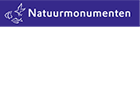According to the dictionary, the meaning of smuggling is: transporting goods across the border with evasion of import or export duties. Shaping the border between Belgium and the Netherlands took several years. After King William I finally agreed to the partition in 1839, which the Belgians had declared in 1830, a separation commission was set up. 250 sessions followed and it was only in 1843 that the border was finally established in the Maastricht Treaty. Through all the deliberations, the border had become anything but a straight line.
To mark the 458-kilometre-long border, boundary posts were erected. To prevent displacement, cast-iron posts weighing more than 300 kilos were used. Initially, 388 boundary posts were ordered. When placed, Vaals (three-country point) in Limburg was given number 1 and the Zwin near Knokke-Heist on the North Sea coast was given number 369. In between, poles with identical numbers were placed in some places (e.g. on the banks of the Meuse) and later some additional boundary poles were placed here and there, with the letters a, b and c. Currently, there are some 400 boundary poles. This is boundary post 239.
Each post bears the Belgian Lion on the Belgian side and the Dutch Lion with sword and arrows on the other side.
Boundary post 239
Steenpaal
2910
Schijf
Contact details
| Opening hours | |
|---|---|
| Open 24 hours | |









